Lazy Investing Brokers for 2025
We found 11 online brokers that are appropriate for Trading Lazy Investing Platforms.
Lazy Investing Brokers Guide
Analysis by Andrew Blumer, Updated Last updated – October 22, 2025
Lazy Investing Brokers

When I first heard the phrase “lazy investing,” it sounded negative. Over time I learned it can be a powerful and low stress strategy. By using lazy investing brokers that provide low cost index funds and ETFs, I built a portfolio that grows in the background without daily monitoring. This approach saves time, reduces stress, and still grows wealth steadily.
In practice, lazy portfolio investing means setting up a diversified and long term portfolio that needs very little intervention. I do not try to time the market or react to every piece of news. Instead, I use broad market index funds and ETFs, automate contributions, and let compounding do the work. A simple S&P 500 ETF I bought in 2013 has more than tripled for me. Short term dips came and went, but the long arc of compounding delivered results.
When you hear the term “lazy”, it might sound like a bad habit but in the world of investing, it’s quite the opposite. Lazy investing is about building long term wealth through simple, low maintenance strategies that require minimal time and emotional involvement. As someone who has actively traded and passively invested, I can say that lazy investing offers a refreshingly stress free approach to growing your capital especially when paired with the right brokers who support automation, low fees, and easy portfolio diversification. For example, using a platform like Vanguard or Fidelity to set up automatic monthly investments into index funds is a classic lazy investing tactic. In 2025, platforms like Schwab Intelligent Portfolios and Betterment also gained popularity for their robo advisor features, which automatically rebalance portfolios and reinvest dividends with minimal user input.
In this article, we’ll explore how lazy investing works, what makes a good broker for this approach, and why more and more investors are choosing to do less and gain more.
Best Lazy Investing Brokers to Consider
IC Markets
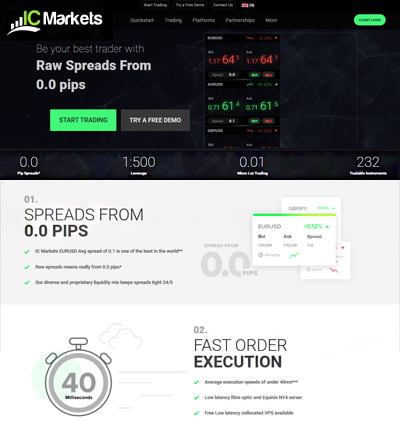
When I trade with IC Markets, I appreciate how easy it is to set up automated strategies. With platforms like MT4, MT5, cTrader, and TradingView, I can create rules once and let them run in the background. For lazy investing, this means I don’t need to constantly check price movements—my strategies handle entries and exits automatically. IC Markets also offers access to Forex, commodities, indices, bonds, futures CFDs, and cryptocurrencies, making diversification simple. The low spreads and lightning-fast execution make it easier to stay hands off while still being efficient. IC Markets is regulated by ASIC (Australia) and CySEC (Cyprus), giving me confidence in its security.
RoboForex
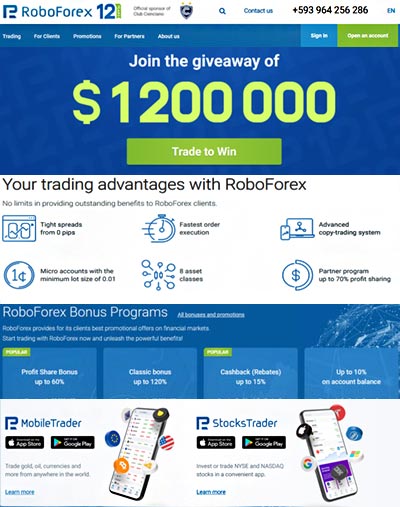
I use RoboForex because it allows me to stay hands off while still accessing flexible trading options. Their CopyFX platform is perfect for lazy investing—it lets me copy strategies from other traders without doing the research myself. RoboForex also supports MT4 and MT5 automation, where I can run Expert Advisors (EAs) for passive setups. They offer access to Forex, stocks, ETFs, indices, commodities, and crypto CFDs, giving me multiple ways to diversify without manual trading. The mobile app lets me check in occasionally, but most of the heavy lifting is automated. The combination of copy trading, EAs, and asset variety makes RoboForex very suitable for a passive investing approach.
eToro

For me, eToro is the ultimate lazy investing platform. Their CopyTrading feature allows me to follow successful traders and automatically mirror their trades, meaning I can invest passively without analyzing charts every day. eToro also offers Smart Portfolios, which bundle stocks, ETFs, and even crypto into long-term strategies managed by professionals. I can choose portfolios based on themes like renewable energy or big tech, making diversification effortless. The social investing community gives me insights without research overload. Knowing that eToro is regulated by the FCA (UK) and CySEC makes me feel even more confident about using it for hands-off investing.
XTB
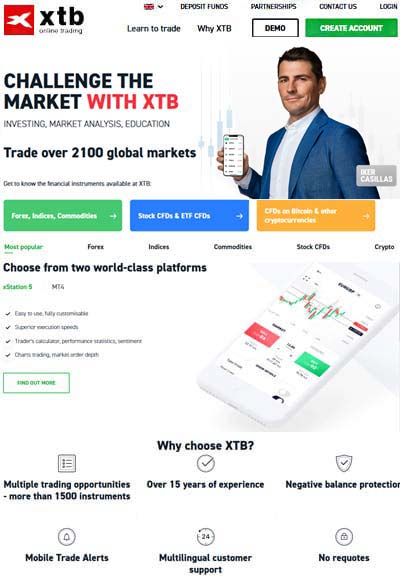
I like using XTB because it combines strong automation options with easy-to-follow tools for lazy investors. Through the xStation platform, I can access built-in sentiment data, automated alerts, and portfolio management tools that help me invest passively. XTB also offers stocks, ETFs, and index CFDs, which makes building a diversified portfolio straightforward. Long-term ETF exposure means I can hold positions without much monitoring, while CFDs allow me to hedge when needed. The educational resources showed me how to automate my approach, and FCA and CySEC regulation reassures me that my portfolio is safe while it runs in the background.
XM
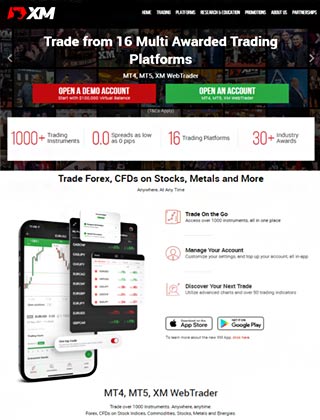
XM is a broker I use when I want flexibility in lazy investing. They offer multiple account types, so I can choose commission-free or raw spread accounts depending on my strategy. With MT4 and MT5 support, I can easily run automated Expert Advisors (EAs) for passive setups. XM offers Forex, commodities, indices, metals, energies, and stock CFDs, letting me diversify without constant monitoring. Their negative balance protection and reliable execution give me peace of mind while my portfolio grows in the background. Being regulated by ASIC, CySEC, and IFSC also adds security.
Pepperstone
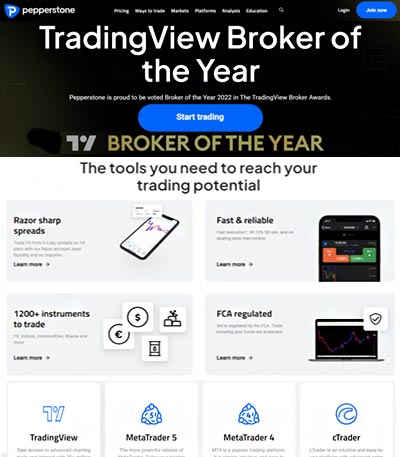
I use Pepperstone for its wide variety of automated trading options that fit well with lazy investing. The broker integrates seamlessly with MT4, MT5, cTrader, and TradingView, making it easy to run trading bots or use copy trading. Their range of instruments—Forex, ETFs, indices, commodities, and crypto CFDs—lets me diversify passively. Pepperstone’s Smart Trader Tools also help optimize strategies, giving me alerts and automation that reduce manual intervention. For me, this means I can set up my portfolio once and let it run. Pepperstone is regulated by the FCA (UK) and ASIC, so I know my money is handled securely while I stay hands off.
AvaTrade
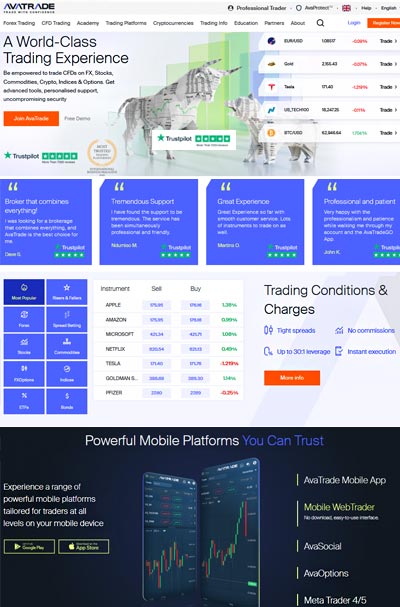
AvaTrade makes lazy investing simple with several copy and social trading features. Their AvaSocial app lets me mirror other traders’ strategies, while AvaTradeGo gives me mobile control without constant monitoring. They also integrate with DupliTrade, where I can automatically copy professional traders. AvaTrade offers access to Forex, stocks, ETFs, indices, commodities, options, and crypto, making passive diversification easy. Commission-free trading and multiple funding options make it convenient to maintain a hands-off approach. For me, it means I can build and hold a portfolio passively while only checking in occasionally.
FP Markets
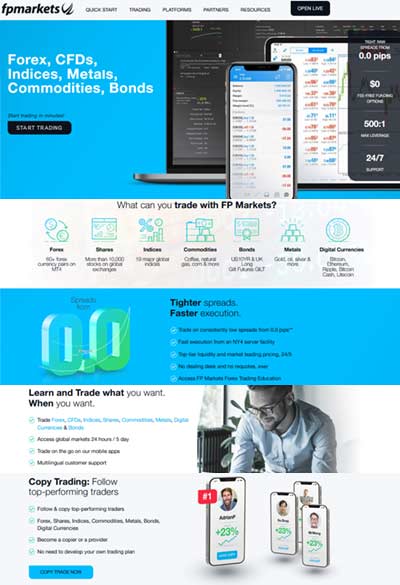
FP Markets combines MT4/MT5 platforms with strong automation features, which makes it ideal for lazy investing. I can set up Expert Advisors (EAs) to trade for me, or use Myfxbook AutoTrade to copy proven strategies. FP Markets also offers Forex, commodities, metals, indices, equities, and crypto CFDs, giving me broad diversification. For long-term hands-off investing, I sometimes use ETFs and equities CFDs while letting EAs handle short-term trades. The fast execution and low spreads keep costs down, and with ASIC and CySEC regulation, I know my funds are safe while my portfolio runs passively in the background.
What Is Lazy Investing?
Lazy investing refers to a long term, passive investment strategy built around a simple portfolio that requires minimal effort to maintain. A lazy portfolio is typically composed of a few diversified assets such as index funds or ETFs that you buy and hold without frequently adjusting or reacting to market changes. You don’t have to monitor individual stock performance on the stock exchange or make active trading decisions in an attempt to boost returns. For instance, a common lazy portfolio is the “Three Fund Portfolio,” which includes a US stock index fund, an international stock index fund, and a bond index fund.
This strategy is favored by long term investors who are willing to wait years often a decade or more before considering selling. The rationale is that short term market fluctuations tend to even out over time, allowing investments to grow steadily without the stress of daily market noise. Patience replaces panic, and consistent growth becomes the goal rather than fast gains. Someone investing $500 monthly in a total market ETF like VTI over 30 years is a real world example of how this strategy works over time.
Lazy portfolios often outperform many short term, actively managed strategies, especially after accounting for fees and emotional missteps. They are also generally considered less risky, as they focus on time tested diversification and long term market trends. This approach is ideal for those who want to grow wealth efficiently without needing to constantly manage or monitor their investments. Think of a busy doctor who sets up automatic investments into a target date retirement fund this is lazy investing in action.
| Portfolio Type | Example Funds | Asset Class | Use Case |
|---|---|---|---|
| Three Fund Portfolio | VTI (Total US Market), VXUS (International Market), BND (US Bonds) | Stocks and Bonds | Balanced global exposure for long term investors |
| Total Market Approach | VTI (Total Stock Market) | US Stocks | Simple all in one exposure for hands off growth |
| Target Date Retirement Fund | Vanguard Target Retirement 2050 Fund (VFIFX) | Mixed (Stocks & Bonds, shifts over time) | Automatically adjusts risk as retirement approaches |
| Robo Advisor Portfolio | Betterment, Schwab Intelligent Portfolios | Automated ETF mix | For those who want a fully automated experience |
| Dividend Focused Lazy Portfolio | VIG (Dividend Appreciation ETF), SCHD (Schwab Dividend Equity) | Dividend Stocks | Focus on income with minimal trading |

Recent Market Examples (2025)
| Asset | Recent Price Range (2025) | Event / Context |
|---|---|---|
| S&P 500 | 5,050 to 5,350 | Inflation fears in Jan 2025 caused a dip; bounced back on strong earnings in May 2025 |
| Nasdaq | 15,800 to 16,500 | Tech pullback in April 2025 after AI stock rally cooled |
| Nvidia | $1,100 to $1,250 | Massive swings during Q1 2025 earnings hype around AI chips |
| Bitcoin | $58,000 to $65,000 | Volatile around ETF inflows and regulatory headlines in early 2025 |
| Brent Crude Oil | $85 to $92 | Spiked in March 2025 due to Middle East tensions |
| Nikkei 225 | 39,500 to 41,000 | Japanese equities surged to record highs in 2025 |
What Are the Advantages of Lazy Investing?
Time Effective
Lazy investing saves me hours each week. Once I chose my core funds, I set up automated deposits and monthly check ins instead of chasing every headline. For example, during the tech pullback in April 2025, when the Nasdaq briefly dipped below 16,000 after strong AI stock rallies cooled, I didn’t stress or react I just let my auto invest keep buying. That consistency added more units at lower prices without me overthinking it.
Better Than Average Results Over Time
My lazy investing ETFs have beaten many of my short term trades. A simple blend of a total market equity ETF plus an aggregate bond ETF quietly compounded through the AI fueled mega cap rallies. For instance, while I was trying to day trade Nvidia when it crossed $1200 in May 2025 and ended up selling too early, my broad market ETF quietly rode the gains of Nvidia, Microsoft, and Apple without the stress. That long term compounding outperformed my attempts at timing.
Low Maintenance
After picking a few index funds and setting target weights, I only check in periodically. When oil prices spiked back above $90 per barrel in March 2025 due to Middle East tensions, my robo advisor automatically rebalanced some of my energy heavy positions into bonds and global equities. Without lifting a finger, I avoided being too overweight in a volatile sector.
Low Cost
Expense ratios on broad ETFs are tiny compared to active funds. Keeping fees low lets more of the market return stay in my account. By contrast, when I actively traded Bitcoin ETFs during their swings between $58,000 and $65,000 this year, I lost a chunk to spreads and short term timing errors while my low cost S&P 500 ETF kept compounding steadily in the background.

Above average long term returns
Many studies have shown that passive portfolios often outperform actively managed funds in the long run. Lazy investing leverages the power of time and compounding interest. Even when markets dip, the strategy is built to recover and grow over time. This natural course correction helps the portfolio rebound and realign with long term growth goals. Consider Warren Buffett’s advice to his heirs to invest in a low cost S&P 500 index fund this is lazy investing backed by a legendary investor.
Lower fees and expenses
Low cost index funds and ETFs form the core of most lazy portfolios. These instruments have significantly lower expense ratios compared to actively managed mutual funds or professional advisory services. Lower fees mean more of your returns stay in your pocket, compounding over time and increasing your long term wealth. For example, investing in a Vanguard Total Stock Market ETF with a 0.03 percent fee can save thousands over decades compared to a fund charging 1 percent annually.
Reduced emotional stress
Lazy investing helps reduce emotional reactions like fear, greed, or panic that lead to poor market timing decisions. By sticking to a steady plan and avoiding frequent trades, investors sidestep the psychological traps that often erode gains. It encourages discipline, consistency, and peace of mind. Someone who avoided panic selling during a market crash and kept investing regularly would have likely seen their portfolio rebound and thrive.
Ways to Maximise Your Lazy Investment Portfolio
Reinvest Your Earnings
One of the simplest yet most powerful ways to grow your portfolio is to consistently reinvest your dividends, interest, and capital gains. From my own portfolio, I set up a dividend reinvestment plan (DRIP) on Vanguard’s VOO ETF. In 2023, the quarterly dividend was about $1.64 per share. Instead of withdrawing it, I let the dividends automatically buy more shares. Over 5 years, those reinvested dividends added up to almost a full extra share without me doing anything pure compounding in action.
Leverage Tax Efficient Accounts
I use a Roth IRA in the US, which lets investments grow tax-free. In 2022, I maxed out the yearly contribution limit of $6,000 by spreading it across the year into a total market ETF. Not paying capital gains tax means that if my $6,000 grows to $30,000 in 20 years, I keep every dollar. In Canada, I have friends who use their TFSA (Tax-Free Savings Account) the same way to shield ETF gains from taxes, which makes a huge difference over decades.
Invest Gradually Over Time
I started by investing $200 every month into SPY (S&P 500 ETF) in 2018, no matter if the market was high or low. By sticking with it, I built a $14,000 position over 5 years just from consistent contributions. Even during market dips like March 2020, I bought SPY at around $230. Today, with SPY trading above $440, those “scary” buys nearly doubled in value. Dollar cost averaging kept me disciplined and rewarded patience.
Focus on Index Funds and ETFs
Index funds and ETFs are the backbone of my lazy portfolio. Instead of stock picking, I put money into VOO (S&P 500) and VXUS (international markets). For example, with VOO I get exposure to Apple, Microsoft, Amazon, and 497 other companies all in one trade. In 2022, the expense ratio was just 0.03% — meaning I paid only $3 in annual fees for every $10,000 invested, compared to the 1 to 2% charged by some mutual funds. That savings compounds massively over decades.
Diversify Strategically
I learned the value of diversification the hard way. Back in 2020, my portfolio was 90% US stocks, and when tech fell 30%, I panicked. Since then, I’ve added international stocks (20%) and bonds (10%). For example, I paired VOO with VXUS and BND (a bond ETF). When US markets dipped in 2022, my bonds cushioned the losses by returning about +3%. That balance kept my portfolio stable and helped me stay invested.
Target Blue Chip Dividend Stocks
In my taxable account, I hold dividend payers like Johnson & Johnson and Procter & Gamble. J&J pays around $1.19 per share quarterly, and P&G about $0.94. With 50 shares of each, that’s roughly $425 per year in dividends. I reinvest them automatically, so my share count grows every quarter. These steady payouts provide psychological comfort during downturns, since I know I’m still getting paid while waiting for markets to recover.
Ignore Short Term Market Fluctuations
When COVID hit in March 2020, my portfolio dropped about 35% in a single month. I wanted to sell, but I held on. By August 2020, not only had I recovered, but I was up +10%. The lesson? Lazy investing thrives on consistency. Reacting emotionally would have locked in losses. By ignoring short-term noise and staying invested, I let time and compounding do the work.
Reinvest Interest and Gains
Alongside stocks, I hold a bond ETF (BND) that pays monthly interest of about $0.17 per share. With 200 shares, that’s about $34/month. Instead of cashing out, I reinvest into the same ETF or redirect into equities during dips. Over 3 years, that reinvestment alone has added hundreds of dollars in extra units, boosting my compounding effect with zero extra deposits.
Practice Patience
Lazy investing is slow but powerful. In 2010, I put $3,000 into a simple S&P 500 fund. By 2023, that single investment grew to almost $11,500 without me adding another cent, just compounding at an average of 10% per year. Holding long term index funds beats trying to time the market. Patience and time are the secret weapons of lazy investing.
Rebalance Periodically
Every January, I rebalance back to my target of 70% stocks / 20% international / 10% bonds. In 2021, stocks outperformed and made up 80% of my portfolio, so I sold some gains and shifted into bonds. This “boring” process kept my risk in check. Rebalancing once a year takes less than an hour but ensures I stick to my long-term goals. For example, a $100,000 portfolio drifted to 80/10/10, I sold $10,000 of stocks and bought $10,000 in bonds to restore balance.

Who Is Lazy Investing Suitable For?
Lazy investing is best suited for individuals who want to grow their wealth passively over the long term without constant involvement or market analysis. When I was working fulltime, I didn’t have the energy to follow markets daily. Setting up automatic contributions to index ETFs saved me time and built wealth without stress. For example, I set a recurring $300/month into a robo advisor, and in 3 years I had over $12,000 invested with minimal effort.
New investors who are intimidated by complex trading strategies can also benefit from lazy investing. Because it emphasizes diversified portfolios, low cost index funds, and minimal decision making, it removes much of the guesswork. A friend of mine started with $50/week into a simple ETF portfolio now, 2 years later, he’s got nearly $6,000 invested without ever worrying about stock picking. On the flip side, an experienced entrepreneur I know keeps a lazy portfolio in ETFs for retirement while focusing his time on his business.
Lazy investing is also well aligned with long term financial goals such as saving for retirement, funding a child’s education, or achieving financial independence. Many in the FIRE (Financial Independence, Retire Early) movement rely on lazy portfolios to grow wealth predictably. By minimizing emotional decision making and avoiding frequent trades, lazy investors often outperform more active traders over decades due to lower costs and fewer mistakes. For example, one FIRE community member invested $1,000/month for 15 years into index ETFs and built a nest egg of over $400,000 without ever stock picking.
Choosing a Broker for Lazy Investing
When selecting a broker for lazy investing, the most important factors are low fees, ease of use, and access to passive investment products like ETFs and index funds. Since the essence of lazy investing is to minimize costs and avoid frequent trading, a broker that charges high commissions or account maintenance fees can erode your long term returns. Look for platforms that offer zero commission trading on ETFs and no hidden charges for account inactivity or portfolio rebalancing.
Automation features are another key consideration. The ideal broker should support automatic investing plans, dividend reinvestment, and portfolio rebalancing tools. These functions help you stick to your investment strategy without having to manually intervene perfect for the set it and forget it mindset that lazy investing encourages.
Access to diversified, low cost index funds and ETFs is crucial. Make sure the broker gives you a wide range of fund options from providers like Vanguard, iShares, or Schwab, which are known for their low expense ratios and broad market exposure. This lets you build a resilient portfolio that mirrors entire markets with minimal overhead.
Lastly, user experience and educational support matter. A clean, intuitive platform with good customer service ensures that you can manage your investments confidently even if you only log in a few times a year. Bonus points if the broker provides educational resources that reinforce passive investing principles rather than pushing frequent trades.
Lazy Investing Brokers Verdict

When people ask me about the best lazy investing brokers, I usually point to Vanguard, Fidelity, or Charles Schwab for their low cost index funds, and Betterment or Wealthfront if you prefer automated portfolios. In Europe, I’ve personally had good experiences with Trade Republic and Scalable Capital, especially for their easy ETF savings plans. Lazy portfolio investing is also perfect for beginners it’s simple, cost effective, and focused on long term growth. A good friend of mine started with just €50 a month in ETFs back in early 2024, and thanks to the AI driven market boom, he’s already seen steady progress without having to touch his account every day. The most common ETFs people use are broad ones like total stock market, the S&P 500, total international stock, and aggregate bond funds. Personally, I keep it simple with VTI, VXUS, and BND, and they’ve served me well. Rebalancing only needs to happen once or twice a year many robo advisors even do it for you. For example, when the S&P 500 hit new highs above 5,300 in May 2025, my robo automatically trimmed my overweight exposure without me having to lift a finger. Taxes do play a role though, which is why I lean on tax advantaged accounts whenever possible. Just recently, I sold a small slice of an ETF inside my ISA and paid no capital gains tax, which felt like a win compared to some of my taxable account trades.
Lazy investing isn’t flashy, but it works. With the right lazy investing brokers and a handful of broad ETFs, I’ve grown my wealth steadily through rate hikes, inflation scares, and volatile events in 2025. While my short term trades in Bitcoin ETFs and AI stocks were stressful and inconsistent, my lazy portfolio kept compounding calmly in the background. For anyone seeking long term growth without day to day stress, lazy portfolio investing remains my most reliable strategy.
Having experienced both the intense pace of active trading and the calm rhythm of lazy investing, I can confidently say that the latter has offered me more peace of mind, stability, and long term growth. Lazy investing isn’t about doing nothing it’s about doing the right things consistently and letting time and compounding do the heavy lifting. I’ve personally seen the benefits of setting up automated contributions into index funds and watching my portfolio grow without the stress of daily market movements.
In recent years, platforms like Vanguard, Fidelity, and Betterment have made it incredibly easy to embrace this strategy. I currently use Schwab Intelligent Portfolios for a portion of my retirement savings, and the robo advisory features have taken a huge mental load off my shoulders. The automatic rebalancing and dividend reinvestments work seamlessly in the background while I focus on other parts of life.
What truly sets lazy investing apart is its simplicity. Whether you're a new investor or someone who’s been in the markets for years, the core principles diversification, low fees, consistency, and patience remain powerful. I’ve learned that wealth doesn’t need to be chased aggressively; it can be built steadily, quietly, and effectively over time.
If you're looking for a strategy that’s low maintenance but still delivers strong long term results, lazy investing is a proven and practical path. All it takes is a solid broker, a reliable plan, and the discipline to stick with it. In my experience, doing less has often resulted in gaining more.
Lazy investing isn’t about avoiding responsibility it's about making smart, efficient decisions that work in your favor over time. By focusing on long term goals, low cost diversified portfolios, and minimal intervention, lazy investing offers a sustainable path to wealth accumulation without the stress of market timing or day to day management. It's a strategy that values simplicity, discipline, and patience qualities that often beat short term speculation.
In my experience as a trader, I’ve seen many investors burn out trying to chase trends or react to daily headlines. Lazy investing, in contrast, rewards those who stay the course and trust the system. It’s ideal for anyone who wants their investments to grow quietly in the background while they focus on living life. Whether you're a beginner looking to get started or a seasoned investor seeking stability, lazy investing deserves serious consideration as a core part of your strategy.
We have conducted extensive research and analysis on over multiple data points on Lazy Investing Brokers to present you with a comprehensive guide that can help you find the most suitable Lazy Investing Brokers. Below we shortlist what we think are the best Lazy Investing Trading Platforms after careful consideration and evaluation. We hope this list will assist you in making an informed decision when researching Lazy Investing Brokers.
Reputable Lazy Investing Brokers Checklist
Selecting a reliable and reputable online Lazy Investing Trading Platforms trading brokerage involves assessing their track record, regulatory status, customer support, processing times, international presence, and language capabilities. Considering these factors, you can make an informed decision and trade Lazy Investing Trading Platforms more confidently.
Selecting the right online Lazy Investing Trading Platforms trading brokerage requires careful consideration of several critical factors. Here are some essential points to keep in mind:
- Ensure your chosen Lazy Investing Trading Platforms broker has a solid track record of at least two years in the industry.
- Verify that the Lazy Investing Trading Platforms broker has a customer support team of at least 15 members responsive to queries and concerns.
- Check if the Lazy Investing Trading Platforms broker operates under the regulatory framework of a jurisdiction that can hold it accountable for any misconduct or resolve disputes fairly and impartially.
- Ensure that the Lazy Investing Trading Platforms broker can process deposits and withdrawals within two to three days, which is crucial when you need to access your funds quickly.
- Look for Lazy Investing Trading Platforms brokers with an international presence in multiple countries, offering its clients local seminars and training programs.
- Ensure the Lazy Investing Trading Platforms broker can hire staff from diverse locations worldwide who can communicate fluently in your local language.
Our team have listed brokers that match your criteria for you below. All brokerage data has been summarised into a comparison table. Scroll down.
Compare Key Features of Lazy Investing Trading Platforms in Our Brokerage Comparison Table
When choosing a broker for Lazy Investing Trading Platforms trading, it's essential to compare the different options available to you. Our Lazy Investing Trading Platforms brokerage comparison table below allows you to compare several important features side by side, making it easier to make an informed choice.
- Minimum deposit requirement for opening an account with each Lazy Investing Trading Platforms broker.
- The funding methods available for Lazy Investing Trading Platforms with each broker.
- The types of instruments you can trade with each Lazy Investing Trading Platforms broker, such as forex, stocks, commodities, and indices.
- The trading platforms each Lazy Investing Trading Platforms broker provides, including their features, ease of use, and compatibility with your devices.
- The spread type (if applicable) for each Lazy Investing Trading Platforms broker affects the cost of trading.
- The level of customer support each Lazy Investing Trading Platforms broker offers, including their availability, responsiveness, and quality of service.
- Whether each Lazy Investing Trading Platforms broker offers Micro, Standard, VIP, or Islamic accounts to suit your trading style and preferences.
By comparing these essential features, you can choose a Lazy Investing Trading Platforms broker that best suits your needs and preferences for Lazy Investing Trading Platforms. Our Lazy Investing Trading Platforms broker comparison table simplifies the process, allowing you to make a more informed decision.
Top 15 Lazy Investing Trading Platforms of 2025 compared
Here are the top Lazy Investing Trading Platforms.
Compare Lazy Investing Trading Platforms brokers for min deposits, funding, used by, benefits, account types, platforms, and support levels. When searching for a Lazy Investing Trading Platforms broker, it's crucial to compare several factors to choose the right one for your Lazy Investing Trading Platforms needs. Our comparison tool allows you to compare the essential features side by side.
All brokers below are Lazy Investing Trading Platforms. Learn more about what they offer below.
You can scroll left and right on the comparison table below to see more Lazy Investing Trading Platforms that accept Lazy Investing Trading Platforms clients.
| Broker |
IC Markets

|
Roboforex

|
eToro

|
XTB

|
XM

|
Pepperstone

|
AvaTrade

|
FP Markets

|
EasyMarkets

|
SpreadEx

|
FXPro

|
|---|---|---|---|---|---|---|---|---|---|---|---|
| Rating | |||||||||||
| Regulation | Seychelles Financial Services Authority (FSA) (SD018) | RoboForex Lid is regulated by Belize FSC, License No. 000138/7, reg. number 000001272. RoboForex Ltd, which is an (A category) member of The Financial Commission, also is a participant of its Compensation Fund | FCA (Financial Conduct Authority) eToro (UK) Ltd (FCA reference 583263), eToro (Europe) Ltd CySEC (Cyprus Securities Exchange Commission), ASIC (Australian Securities and Investments Commission) eToro AUS Capital Limited ASIC license 491139, CySec (Cyprus Securities and Exchange Commission under the license 109/10), FSAS (Financial Services Authority Seychelles) eToro (Seychelles) Ltd license SD076 | FCA (Financial Conduct Authority reference 522157), CySEC (Cyprus Securities and Exchange Commission reference 169/12), FSCA (Financial Sector Conduct Authority), XTB AFRICA (PTY) LTD licensed to operate in South Africa, KPWiG (Polish Securities and Exchange Commission), DFSA (Dubai Financial Services Authority), DIFC (Dubai International Financial Center), CNMV (Comisión Nacional del Mercado de Valores), KNF (Komisja Nadzoru Finansowego), IFSC (Belize International Financial Services Commission license number IFSC/60/413/TS/19) | Financial Services Commission (FSC) (000261/27) XM ZA (Pty) Ltd, Cyprus Securities and Exchange Commission (CySEC) (license 120/10) Trading Point of Financial Instruments Ltd, Australian Securities and Investments Commission (ASIC) (number 443670) Trading Point of Financial Instruments Pty Ltd | Financial Conduct Authority (FCA), Australian Securities and Investments Commission (ASIC), Cyprus Securities and Exchange Commission (CySEC), Federal Financial Supervisory Authority (BaFin), Dubai Financial Services Authority (DFSA), Capital Markets Authority of Kenya (CMA), Pepperstone Markets Limited is incorporated in The Bahamas (number 177174 B), Licensed by the Securities Commission of the Bahamas (SCB) number SIA-F217 | Australian Securities and Investments Commission (ASIC) Ava Capital Markets Australia Pty Ltd (406684), South African Financial Sector Conduct Authority (FSCA) Ava Capital Markets Pty Ltd (45984), Financial Services Agency (Japan FSA) Ava Trade Japan K.K. (1662), Financial Futures Association of Japan (FFAJ),, FFAJ, Abu Dhabi Global Markets (ADGM)(190018) Ava Trade Middle East Ltd (190018), Polish Financial Supervision Authority (KNF) AVA Trade EU Ltd, Central Bank of Ireland (C53877) AVA Trade EU Ltd, British Virgin Islands Financial Services Commission (BVI) BVI (SIBA/L/13/1049), Israel Securities Association (ISA) (514666577) ATrade Ltd, Financial Regulatory Services Authority (FRSA) | CySEC (Cyprus Securities and Exchange Commission) (371/18), ASIC AFS (Australian Securities and Investments Commission) (286354), FSP (Financial Sector Conduct Authority in South Africa) (50926), Financial Services Authority Seychelles (FSA) (130) | Easy Forex Trading Ltd is regulated by CySEC ( License Number 079/07). Easy Forex Trading Ltd is the only entity that onboards EU clients, easyMarkets Pty Ltd is regulated by ASIC ( AFS License No. 246566), EF Worldwide Ltd in Seychelles is regulated by FSA ( License Number SD056), EF Worldwide Ltd in British Virgin Islands is regulated by FSC (License Number SIBA/L/20/1135), | FCA (Financial Conduct Authority) (190941), Gambling Commission (Great Britain) (8835) | FCA (Financial Conduct Authority) (509956), CySEC (Cyprus Securities and Exchange Commission) (078/07), FSCA (Financial Sector Conduct Authority) (45052), SCB (Securities Commission of The Bahamas) (SIA-F184), FSA (Financial Services Authority of Seychelles) (SD120) |
| Min Deposit | 200 | 10 | 50 | No minimum deposit | 5 | No minimum deposit | 100 | 100 | 25 | No minimum deposit | 100 |
| Funding |
|
|
|
|
|
|
|
|
|
|
|
| Used By | 200,000+ | 730,000+ | 40,000,000+ | 1,000,000+ | 10,000,000+ | 400,000+ | 400,000+ | 200,000+ | 250,000+ | 60,000+ | 7,800,000+ |
| Benefits |
|
|
|
|
|
|
|
|
|
|
|
| Accounts |
|
|
|
|
|
|
|
|
|
|
|
| Platforms | MT5, MT4, MetaTrader WebTrader, Mobile Apps, iOS (App Store), Android (Google Play), MetaTrader iPhone/iPad, MetaTrader Android Google Play, MetaTrader Mac, cTrader, cTrader Web, cTrader iPhone/iPad, cTrader iMac, cTrader Android Google Play, cTrader Automate, cTrader Copy Trading, TradingView, Virtual Private Server, Trading Servers, MT4 Advanced Trading Tools, IC Insights, Trading Central | MT4, MT5, R Mobile Trader, R StocksTrader, WebTrader, Mobile Apps, iOS (App Store), Android (Google Play), Windows | eToro Trading App, Mobile Apps, iOS (App Store), Android (Google Play), CopyTrading, Web | MT4, Mirror Trader, Web Trader, Tablet, Mobile Apps, iOS (App Store), Android (Google Play) | MT5, MT5 WebTrader, XM Apple App for iPhone, XM App for Android Google Play, Tablet: MT5 for iPad, MT5 for Android Google Play, XM App for iPad, XM App for iOS (App Store), Android (Google Play), Mobile Apps | MT4, MT5, cTrader,WebTrader, TradingView, Windows, Mobile Apps, iOS (App Store), Android (Google Play) | MT4, MT5, Web Trading, AvaTrade App, AvaOptions, Mac Trading, AvaSocial, Mobile Apps, iOS (App Store), Android (Google Play) | MT4, MT5, TradingView, cTrader, WebTrader, Mobile Trader, Mobile Apps, iOS (App Store), Android (Google Play) | easyMarkets App, Mobile Apps, iOS (App Store), Android (Google Play), Web Platform, TradingView, MT4, MT5 | Web, Mobile Apps, iOS (App Store), Android (Google Play), iPad App, iPhone App, TradingView | MT4, MT5, cTrader, FxPro WebTrader, FxPro Mobile Apps, iOS (App Store), Android (Google Play) |
| Support |
|
|
|
|
|
|
|
|
|
|
|
| Learn More |
Sign
Up with icmarkets |
Sign
Up with roboforex |
Sign
Up with etoro |
Sign
Up with xtb |
Sign
Up with xm |
Sign
Up with pepperstone |
Sign
Up with avatrade |
Sign
Up with fpmarkets |
Sign
Up with easymarkets |
Sign
Up with spreadex |
Sign
Up with fxpro |
| Risk Warning | Losses can exceed deposits | Losses can exceed deposits | 61% of retail investor accounts lose money when trading CFDs with this provider. | 69% - 80% of retail investor accounts lose money when trading CFDs with this provider. You should consider whether you understand how CFDs work and whether you can afford to take the high risk of losing your money. | CFDs are complex instruments and come with a high risk of losing money rapidly due to leverage. 75.99% of retail investor accounts lose money when trading CFDs with this provider. You should consider whether you understand how CFDs work and whether you can afford to take the high risk of losing your money. | 75-95 % of retail investor accounts lose money when trading CFDs | 71% of retail investor accounts lose money when trading CFDs with this provider | Losses can exceed deposits | Your capital is at risk | 65% of retail CFD accounts lose money | 75.78% of retail investor accounts lose money when trading CFDs and Spread Betting with this provider |
| Demo |
IC Markets Demo |
Roboforex Demo |
eToro Demo |
XTB Demo |
XM Demo |
Pepperstone Demo |
AvaTrade Demo |
FP Markets Demo |
easyMarkets Demo |
SpreadEx Demo |
FxPro Demo |
| Excluded Countries | US, IR, CA, NZ, JP | AU, BE, BQ, BR, CA, CW, CZ, DE, ES, EE, EU, FM, FR, FI, GW, ID, IR, JP, LR, MP, NL, PF, PL, RU, SE, SJ, SS, SL, SI, TL, TR, DO, US, IT, AT, PT, BG, HR, CY, DK, FL, GR, IE, LV, LT, MT, RO, SK, CH | ZA, ID, IR, KP, BE, CA, JP, SY, TR, IL, BY, AL, MD, MK, RS, GN, CD, SD, SA, ZW, ET, GH, TZ, LY, UG, ZM, BW, RW, TN, SO, NA, TG, SL, LR, GM, DJ, CI, PK, BN, TW, WS, NP, SG, VI, TM, TJ, UZ, LK, TT, HT, MM, BT, MH, MV, MG, MK, KZ, GD, FJ, PT, BB, BM, BS, AG, AI, AW, AX, LB, SV, PY, HN, GT, PR, NI, VG, AN, CN, BZ, DZ, MY, KH, PH, VN, EG, MN, MO, UA, JO, KR, AO, BR, HR, GL, IS, IM, JM, FM, MC, NG, SI, | US, IN, PK, BD, NG , ID, BE, AU | US, CA, IL, IR | AF, AS, AQ, AM, AZ, BY, BE, BZ, BT, BA, BI, CM, CA, CF, TD, CG, CI, ER, GF, PF, GP, GU, GN, GW, GY, HT, VA, IR, IQ, JP, KZ, LB, LR, LY, ML, MQ, YT, MZ, MM, NZ, NI, KP, PS, PR, RE, KN, LC, VC, WS, SO, GS, KR, SS, SD, SR, SY, TJ, TN, TM, TC, US, VU, VG, EH, ES, YE, ZW, ET | BE, BR, KP, NZ, TR, US, CA, SG | US, JP, NZ | US, IL, BC, MB, QC, ON, AF, BY, BI, KH, KY, TD, KM, CG, CU, CD, GQ, ER, FJ, GN, GW, HT, IR, IQ, LA, LY, MZ, MM, NI, KP, PW, PA, RU, SO, SS, SD, SY, TT, TM, VU, VE, YE | US, TR | US, CA, IR |
All Lazy Investing Trading Platforms in more detail
You can compare Lazy Investing Trading Platforms ratings, min deposits what the the broker offers, funding methods, platforms, spread types, customer support options, regulation and account types side by side.
We also have an indepth Top Lazy Investing Trading Platforms for 2025 article further below. You can see it now by clicking here
We have listed top Lazy Investing Trading Platforms below.
Lazy Investing Brokers List

Funding methods
Bank transfer Credit Card PaypalPlatforms
MT5, MT4, MetaTrader WebTrader, Mobile Apps, iOS (App Store), Android (Google Play), MetaTrader iPhone/iPad, MetaTrader Android Google Play, MetaTrader Mac, cTrader, cTrader Web, cTrader iPhone/iPad, cTrader iMac, cTrader Android Google Play, cTrader Automate, cTrader Copy Trading, TradingView, Virtual Private Server, Trading Servers, MT4 Advanced Trading Tools, IC Insights, Trading CentralCustomer support
Live chat Phone support Email supportAccount Types
Micro account Standard account ECN accountIslamic account VIP account

Funding methods
Bank transfer Credit Card PaypalPlatforms
MT4, MT5, R Mobile Trader, R StocksTrader, WebTrader, Mobile Apps, iOS (App Store), Android (Google Play), WindowsCustomer support
Live chat Phone support Email supportAccount Types
Micro account Standard account ECN accountIslamic account VIP account

eToro is a multi-asset platform which offers both investing in stocks and cryptoassets, as well as trading CFDs.
Please note that CFDs are complex instruments and come with a high risk of losing money rapidly due to leverage. 61% of retail investor accounts lose money when trading CFDs with this provider. You should consider whether you understand how CFDs work, and whether you can afford to take the high risk of losing your money.
This communication is intended for information and educational purposes only and should not be considered investment advice or investment recommendation. Past performance is not an indication of future results.
Copy Trading does not amount to investment advice. The value of your investments may go up or down. Your capital is at risk.
Copy trading is a portfolio management service, provided by eToro (Europe) Ltd., which is authorised and regulated by the Cyprus Securities and Exchange Commission.
Crypto investments are risky and highly volatile. Tax may apply. Understand the risks here.
Don't invest unless you're prepared to lose all the money you invest. This is a high-risk investment, and you should not expect to be protected if something goes wrong. Take 2 mins to learn more.
eToro USA LLC does not offer CFDs and makes no representation and assumes no liability as to the accuracy or completeness of the content of this publication, which has been prepared by our partner utilizing publicly available non-entity specific information about eToro.
Funding methods
Bank transfer Credit Card PaypalPlatforms
eToro Trading App, Mobile Apps, iOS (App Store), Android (Google Play), CopyTrading, WebCustomer support
Live chat Phone support Email supportAccount Types
Micro account Standard account ECN accountIslamic account VIP account

Funding methods
Bank transfer Credit Card PaypalPlatforms
MT4, Mirror Trader, Web Trader, Tablet, Mobile Apps, iOS (App Store), Android (Google Play)Customer support
Live chat Phone support Email supportAccount Types
Micro account Standard account ECN accountIslamic account VIP account

Funding methods
Bank transfer Credit Card PaypalPlatforms
MT5, MT5 WebTrader, XM Apple App for iPhone, XM App for Android Google Play, Tablet: MT5 for iPad, MT5 for Android Google Play, XM App for iPad, XM App for iOS (App Store), Android (Google Play), Mobile AppsCustomer support
Live chat Phone support Email supportAccount Types
Micro account Standard account ECN accountIslamic account XM Swap-Free account (XM Ultra Low Account) VIP account

Funding methods
Bank transfer Credit Card PaypalPlatforms
MT4, MT5, cTrader,WebTrader, TradingView, Windows, Mobile Apps, iOS (App Store), Android (Google Play)Customer support
Live chat Phone support Email supportAccount Types
Micro account Standard account ECN accountIslamic account Pro Account VIP account

Funding methods
Bank transfer Credit Card PaypalPlatforms
MT4, MT5, Web Trading, AvaTrade App, AvaOptions, Mac Trading, AvaSocial, Mobile Apps, iOS (App Store), Android (Google Play)Customer support
Live chat Phone support Email supportAccount Types
Micro account Standard account ECN accountIslamic account VIP account

Funding methods
Bank transfer Credit Card PaypalPlatforms
MT4, MT5, TradingView, cTrader, WebTrader, Mobile Trader, Mobile Apps, iOS (App Store), Android (Google Play)Customer support
Live chat Phone support Email supportAccount Types
Micro account Standard account ECN accountIslamic account VIP account

Funding methods
Bank transfer Credit Card PaypalPlatforms
easyMarkets App, Mobile Apps, iOS (App Store), Android (Google Play), Web Platform, TradingView, MT4, MT5Customer support
Live chat Phone support Email supportAccount Types
Micro account Standard account ECN accountIslamic account VIP account

Funding methods
Bank transfer Credit Card PaypalPlatforms
Web, Mobile Apps, iOS (App Store), Android (Google Play), iPad App, iPhone App, TradingViewCustomer support
Live chat Phone support Email supportAccount Types
Micro account Standard account ECN accountIslamic account VIP account

Funding methods
Bank transfer Credit Card PaypalPlatforms
MT4, MT5, cTrader, FxPro WebTrader, FxPro Mobile Apps, iOS (App Store), Android (Google Play)Customer support
Live chat Phone support Email supportAccount Types
Micro account Standard account ECN accountIslamic account VIP account
Learn more
 Losses can exceed deposits
Losses can exceed deposits
Losses can exceed deposits